Yoga and it’s Types – Which Style Is Right for You?
What is Yoga?
Yoga is a holistic discipline that originated over 5,000 years ago in ancient India. The word “Yoga” comes from the Sanskrit root “Yuj”, which means “to yoke” or “to unite.” It refers to the union of the body, mind, and spirit, ultimately leading to spiritual awakening and self-realization.
While yoga includes physical postures (asanas), it is much more than just exercise—it is a comprehensive system for physical health, mental clarity, emotional balance, and spiritual growth.
Philosophy of Yoga
Yoga is deeply rooted in Indian philosophy and is elaborated upon in ancient texts like:
- The Vedas – Oldest Hindu scriptures
- The Upanishads – Spiritual teachings
- The Bhagavad Gita – Dialogue on dharma and yoga
- The Yoga Sutras of Patanjali – The classical guidebook on yoga philosophy
Patanjali defines yoga as:
“Yogas chitta vritti nirodhah” – Yoga is the cessation of the fluctuations of the mind.
Benefits of Yoga
- Improves flexibility and strength
- Enhances lung capacity and respiratory health
- Reduces stress, anxiety, and depression
- Boosts focus, concentration, and mental clarity
- Balances hormones and supports metabolic function
- Increases self-awareness and inner peace
Types of Yoga
Yoga has evolved into several branches, each offering a unique approach suited for different needs and lifestyles.
1. Hatha Yoga – The Foundation
Hatha comes from the Sanskrit words “Ha” meaning sun and “Tha” meaning moon, symbolizing the balance of opposing energies—active and passive or masculine and feminine. As the foundational branch of yoga, Hatha Yoga emphasizes bringing harmony between these elements to promote holistic well-being.
Key Characteristics:
- Ideal for Beginners: Hatha yoga is structured in a way that helps newcomers learn the fundamentals of yoga, including how to hold poses correctly and breathe consciously.
- Slow-Paced and Focused on Alignment: Unlike more vigorous styles, Hatha sessions are slower, allowing time to focus on proper alignment, body awareness, and holding postures with stability and comfort.
- Excellent for Stress Relief: The integration of asana (postures), pranayama (breath control), and dhyana (meditation) helps activate the parasympathetic nervous system, promoting deep relaxation and stress reduction.
- Example – Popular Sequence of Surya Namaskara (Sun Salutation)
Benefits:
- Builds foundational strength and flexibility
- Reduces stress and anxiety
- Improves posture and breath awareness
- Enhances mental clarity through mindful movement
Suitable For:
- Beginners to intermediate
- Individuals seeking a gentle, balanced practice
- Anyone recovering from stress or fatigue
- Those wanting to learn proper alignment and breathing basics
2. Vinyasa Yoga – Flow with Breath
Vinyasa is derived from the Sanskrit term “nyasa” (to place) and “vi” (in a special way), reflecting the practice’s central principle: mindful movement with intention and awareness. In Vinyasa Yoga, each movement is seamlessly linked to the breath, creating a smooth and dynamic flow of poses.
This style is energetic, creative, and rhythmically engaging, often compared to a moving meditation. It’s particularly appealing to those who like their workouts to be physically invigorating yet mentally grounding.
Key Characteristics:
- Strength & Endurance: Continuous, flowing sequences increase the heart rate, improve stamina, and builds lean muscle.
- Use of Music: Many classes use music to enhance rhythm, mood, and emotional expression during practice.
- Perfect for Those Who Enjoy Movement & Variety: No two Vinyasa classes are exactly the same, which keeps the experience fresh and engaging. It’s great for people who thrive on creativity and fluidity in their workouts.
- Example: Power Yoga, Creative Sequencing
Benefits:
- Builds cardiovascular endurance and stamina
- Enhances coordination and balance
- Promotes flexibility and dynamic strength
- Encourages breath-movement synchronization
Suitable For:
- Active individuals or athletes
- Those who enjoy rhythmic, dance-like movement
- Practitioners seeking variety and creativity in classes
3. Ashtanga Yoga – Discipline and Structure
Ashtanga Yoga, as taught by Sri K. Pattabhi Jois, is a systematic and physically intense style of yoga known for its set sequences, precise technique, and focus on breath and gaze control. Unlike other modern yoga styles that may vary from class to class, Ashtanga follows a consistent format, allowing practitioners to build strength, flexibility, and mental discipline over time.
Though the word Ashtanga also refers to the eightfold path of yoga philosophy, this particular practice focuses on asana (posture) as the gateway to deeper inner work.
Key Characteristics:
- Set Sequences of Postures: Practitioners follow one of several fixed series (Primary, Intermediate, and Advanced), with each pose designed to prepare the body for the next.
- Repetition & Mastery: Each series must be mastered before advancing to the next, fostering patience, perseverance, and depth of practice.
- Specific Breath & Drishti (Gaze): Each movement is coordinated with ujjayi pranayama (victorious breath) and a specific drishti (gazing point), encouraging intense concentration and internal focus.
Benefits:
- Develops physical and mental discipline
- Builds strength, flexibility, and focus
- Establishes a consistent self-practice
- Detoxifies the body through heat and breath
Suitable For:
- Experienced practitioners seeking a set routine
- People who enjoy structure and progression
- Those with a goal-oriented mindset
- Fitness-focused individuals looking for a challenge
4. Iyengar Yoga – Precision and Alignment
Iyengar Yoga, developed by B.K.S. Iyengar, is a methodical and therapeutic form of yoga that emphasizes alignment, precision, and posture. This style is known for its meticulous attention to anatomical detail and the innovative use of props—such as blocks, straps, bolsters, blankets, and chairs—to help students access poses safely and correctly, regardless of age, experience, or physical limitations.
It’s an excellent choice for anyone seeking a deeper understanding of body mechanics, especially useful for injury recovery, posture correction, and building stability before advancing into more dynamic practices.
Key Characteristics:
- Focus on Alignment: Every pose is taught with great attention to correct positioning, ensuring the body is properly aligned to prevent strain and injury.
- Use of Props: Tools like blocks, belts, and walls are used to support, modify, or deepen poses, making the practice accessible to all levels and body types.
- Therapeutic and Safe: Particularly beneficial for people with injuries, chronic pain, or limited mobility. Iyengar Yoga is often recommended by physical therapists and doctors.
Benefits:
- Improves posture and body mechanics
- Builds deep body awareness
- Supports recovery from injury or chronic pain
- Increases flexibility with alignment and props
Suitable For:
- Those recovering from injury
- Detail-oriented practitioners
- Beginners needing modification and support
- Anyone with physical limitations or chronic conditions
5. Kundalini Yoga – Awaken Inner Energy
Kundalini Yoga is a transformative and deeply spiritual practice that focuses on awakening the dormant energy (Kundalini Shakti) said to reside at the base of the spine. This energy, when awakened, is believed to rise through the chakras (energy centers), bringing about expanded awareness, emotional healing, and ultimately, a state of higher consciousness.
Unlike more physically focused styles of yoga, Kundalini Yoga weaves together breath (pranayama), sound (mantra), movement (kriya), and meditation, offering a comprehensive mind-body-spirit experience. It’s often called the “yoga of awareness”, as it aims to help practitioners break through internal blockages and connect with their highest self.
Key Characteristics:
- Highly Spiritual and Meditative: While physical movement is involved, the emphasis is on inner transformation, intuition, and soul connection.
- Use of Kriyas: Rather than freestyle flows or set sequences, Kundalini uses kriyas—specific combinations of postures, breath, sound, and mudra—each designed for a unique purpose (e.g., boosting immunity, releasing fear, opening the heart).
- Incorporates Mantras and Chanting: Sacred sounds like Sat Nam (“Truth is my identity”) are used to tune the mind, purify emotions, and elevate vibrational frequency.
- Emphasis on Breathwork: Powerful breathing techniques such as Breath of Fire are central, helping to energize the body, cleanse toxins, and sharpen focus.
Benefits:
- Stimulates the nervous system and chakra energy
- Reduces emotional blocks and anxiety
- Enhances intuition and spiritual awareness
- Builds resilience through breath and mantra
Suitable For:
- Individuals seeking spiritual and energetic awakening
- Those interested in meditation and mantra chanting
- People coping with emotional stress or fatigue
- Anyone looking for deep inner transformation
6. Yin Yoga – Deep Stretch and Stillness
Yin Yoga is a slow, introspective style of yoga that targets the deep connective tissues of the body—such as ligaments, joints, fascia, and bones—rather than focusing on muscles. Poses are held for extended periods (usually 3 to 5 minutes or even longer), allowing the body to soften gradually and safely under gravity.
This practice emphasizes stillness, patience, and deep release, making it both physically therapeutic and mentally meditative. While it may seem gentle on the surface, Yin Yoga has a profound effect on flexibility, energy flow, and emotional wellbeing.
It’s particularly effective as a complementary practice for more dynamic (Yang) styles like Vinyasa, running, or weight training—helping restore balance and prevent burnout.
Key Characteristics:
- Long, Passive Holds: Poses are mostly seated or reclined, allowing gravity and time—not effort—to work on the deeper tissues.
- Targeting Fascia and Joints: The focus is on areas often overlooked in faster styles, such as the hips, pelvis, spine, and shoulders.
- Subtle Energy Work: Based on Traditional Chinese Medicine principles, Yin Yoga stimulates meridian lines, promoting better chi (life force) flow and organ health.
Benefits:
- Improves joint mobility and connective tissue health
- Encourages deep relaxation and stillness
- Supports mindfulness and stress reduction
- Enhances flexibility, particularly in hips and spine
Suitable For:
- Athletes or weight trainers needing muscle recovery
- People with anxiety or overstimulation
- Those looking to balance an active lifestyle
- Practitioners seeking a meditative, introspective practice
7. Restorative Yoga – Healing and Relaxation
Restorative Yoga is a deeply restful, therapeutic style of yoga designed to activate the body’s relaxation response and support physical, mental, and emotional healing. Unlike more active forms of yoga, Restorative focuses on complete comfort and stillness—where the practitioner is guided into gentle, supported postures with no effort or muscular engagement.
The use of props such as bolsters, blankets, straps, and blocks allows the body to fully let go, making this practice especially effective for chronic stress, fatigue, anxiety, trauma recovery, and post-illness healing.
Rooted in the teachings of B.K.S. Iyengar, Restorative Yoga evolved as a means to restore balance to the nervous system, and has since become a powerful self-care practice across the globe.
Key Characteristics:
- Support Over Stretch: Unlike Yin Yoga, which works into connective tissues, Restorative Yoga is about comfort and containment, not intensity.
- Nervous System Reset: It directly stimulates the parasympathetic nervous system (rest-and-digest mode), helping to reduce cortisol levels and promote deep rest.
- Few Postures, Long Holds: A typical class might include just 4–6 poses, each held for 5 to 20 minutes, often with soft music or silence.
- Inclusive and Accessible: Suitable for all body types, health conditions, and levels of experience, including seniors, those recovering from surgery, and pregnant individuals.
Benefits:
- Activates the parasympathetic nervous system
- Reduces fatigue, insomnia, and chronic stress
- Gently restores energy and calm
- Promotes healing at a physical and emotional level
Suitable For:
- Anyone recovering from illness, surgery, or trauma
- Individuals dealing with anxiety or burnout
- Pregnant or postpartum women
- Beginners needing gentleness and support
8. Bikram Yoga / Hot Yoga – Sweat and Detox
Bikram Yoga is a standardized, vigorous form of yoga practiced in a hot, humid room set to approximately 105°F (40°C) with 40% humidity. Developed by Bikram Choudhury, this style consists of a fixed sequence of 26 postures and 2 breathing exercises, practiced over 90 minutes in a mirror-lined room with carpeted floors and bright lighting.
The extreme heat aims to mimic the climate of India, enhance flexibility, increase circulation, and promote profuse sweating—which is believed to aid in detoxification and metabolic stimulation.
While Bikram Yoga follows a strict format, the term “Hot Yoga” is often used more broadly to describe any style of yoga practiced in a heated room, such as Vinyasa or Power Yoga in heat. These classes can vary in sequencing, intensity, music, and room conditions.
Key Characteristics:
- Heat-Intensified Practice: The heated environment warms the muscles, allowing for deeper stretching and increased cardiovascular activity.
- Heavy Sweating: Practitioners often sweat significantly, which is believed to help release toxins, flush the lymphatic system, and clear the skin.
- Structured Sequence (in Bikram): The class always follows the same 26-posture series, making it easy to track progress over time.
- Hydration is Crucial: Because of the intensity and fluid loss, staying well-hydrated before, during, and after class is essential.
Benefits:
- Enhances flexibility and circulation
- Promotes detoxification through sweat
- Boosts endurance and cardiovascular health
- Encourages discipline and mental focus
Suitable For:
- Individuals who enjoy intense physical challenge
- People looking to improve flexibility and tone
- Those using yoga as part of a weight loss program
- Practitioners who thrive in structured environments
9. Prenatal Yoga – For Expecting Mothers
Prenatal Yoga is a specially designed practice that caters to the unique physical, emotional, and mental needs of pregnant individuals at every stage of pregnancy. Combining gentle movement, breathwork, meditation, and body awareness, it helps prepare expectant mothers for childbirth and supports a healthy pregnancy journey.
This style emphasizes safe postures, pelvic floor strengthening, spinal alignment, and relaxation techniques that can be incredibly useful during labor and delivery. Beyond the physical benefits, prenatal yoga creates space for emotional connection, stress relief, and a supportive community of fellow expecting mothers.
Key Characteristics:
- Safety-Centric: Avoids poses that compress the belly or require lying flat on the back in later trimesters.
- Breath as a Tool: Focuses on calming, conscious breathing that can be used during contractions and labor.
- Emphasis on Connection: Encourages bonding with the baby and attuning to the body’s changing rhythms.
- Emotional Support: Offers tools to ease anxiety, mood swings, and emotional fluctuations common during pregnancy.
Benefits:
- Eases back pain, swelling, and physical tension
- Enhances breath awareness and labor preparedness
- Strengthens pelvic floor and improves posture
- Supports emotional balance and connection with baby
Suitable For
- Pregnant women (any trimester)
- First-time or experienced mothers-to-be
- Those seeking holistic prenatal care
- Women looking for gentle movement and stress relief during pregnancy
Best Time to Practice Yoga
- Morning: Traditionally considered the best time, especially at dawn (Brahma Muhurta)
- Evening: Good for relaxation and stress relief
- Empty stomach: Always practice at least 2–3 hours after a meal
- Consistency matters more than time of day
Final Thoughts
Yoga is not a one-size-fits-all practice. Whether you seek fitness, stress relief, spiritual growth, or simply a more balanced lifestyle, there’s a type of yoga suited for you.
The key is to start where you are—with curiosity, openness, and consistency. Over time, yoga becomes not just something you do, but a way you live.

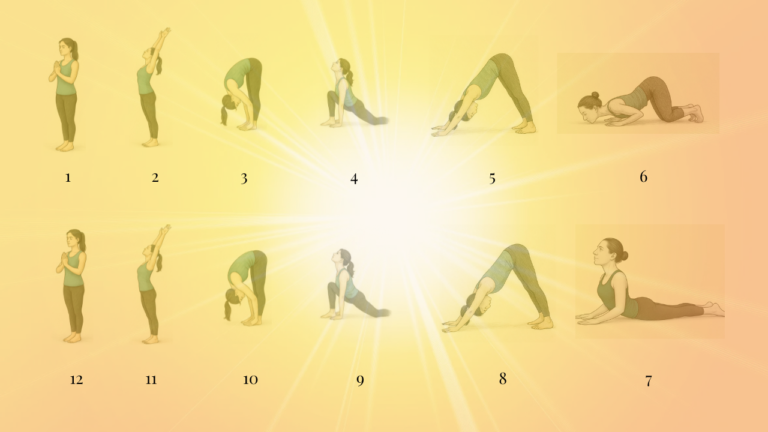
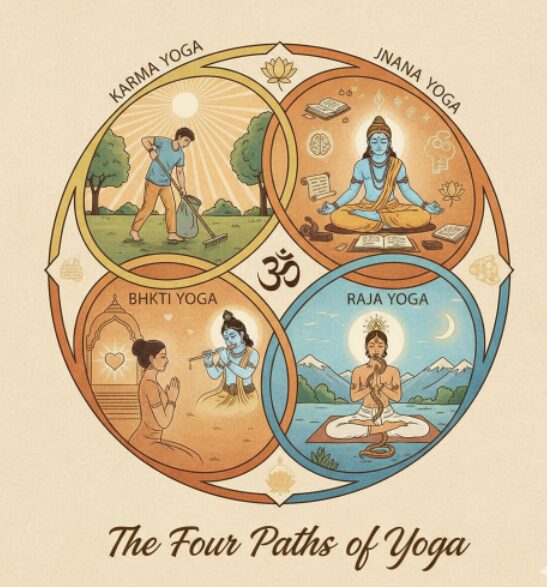
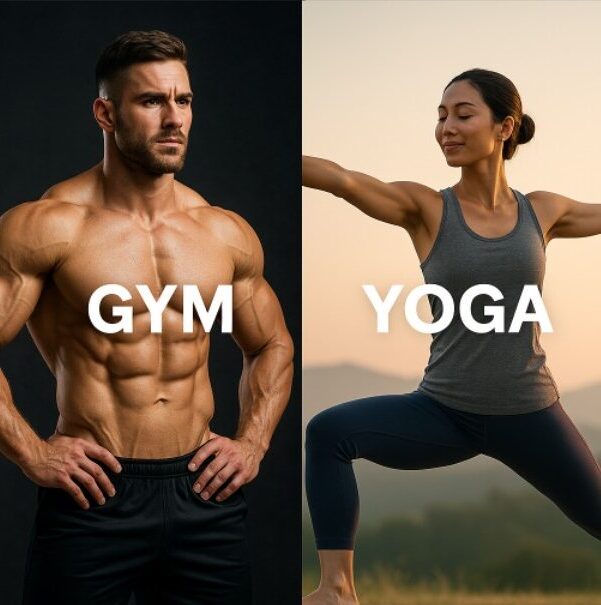
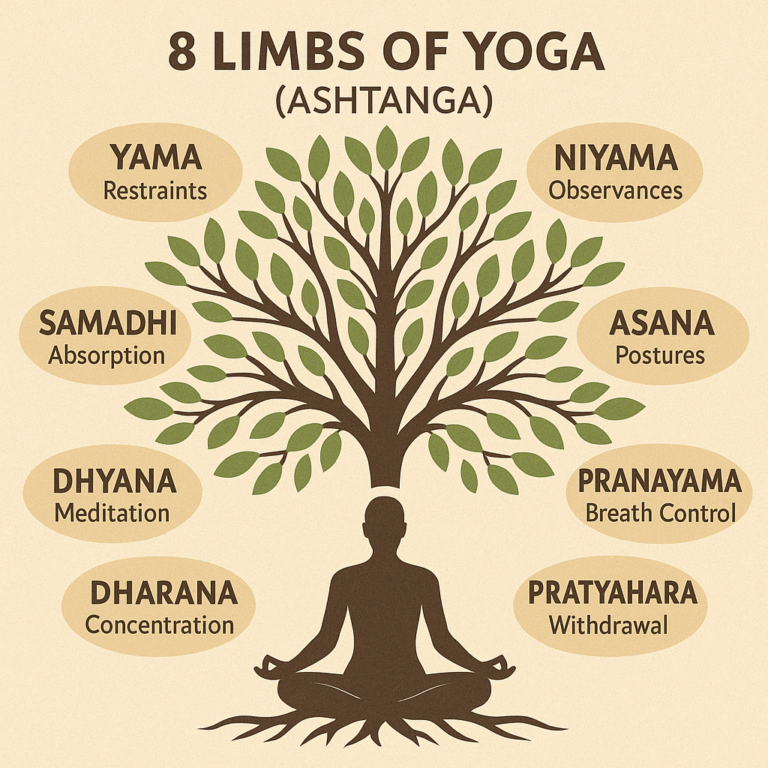

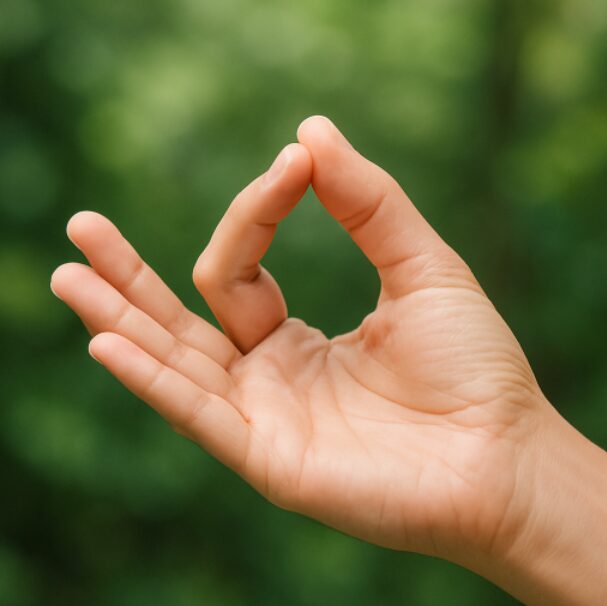
2 Comments